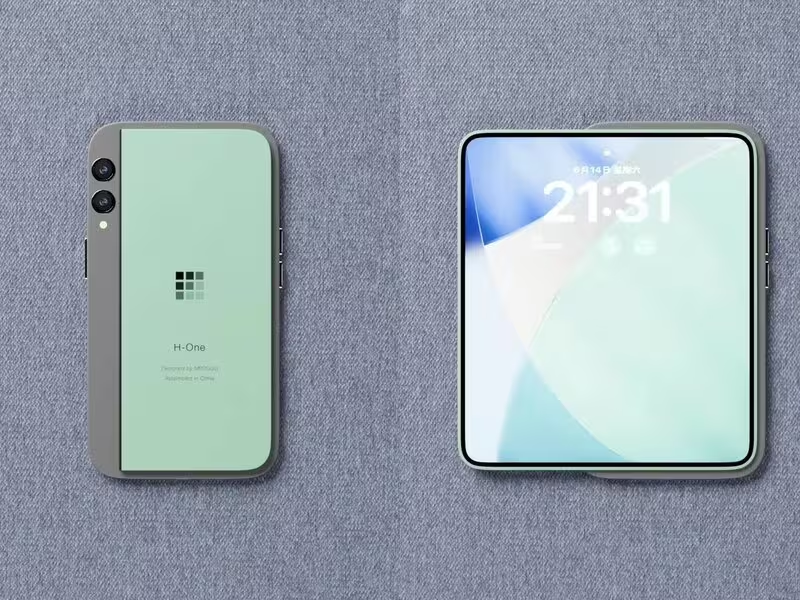
In the world of smartphones, “hybrid iPhone concepts” are capturing the imagination of both designers and eager Apple fans. These ideas blend the familiar iPhone shape and ecosystem with fresh form-factors, new display types, or dual-function hardware. In this article, we’ll explore what hybrid iPhone concepts are, why they matter, what they might look like, and what this means for smartphone design going forward.
When we say “hybrid iPhone concepts,” we’re referring to design proposals, renderings or speculative models that imagine an iPhone combining traditional elements (flat slate design, iOS ecosystem, Apple branding) with new hardware innovations, such as:
Foldable or flexible displays combined with the classic iPhone body. For example, a concept calls it the “iPhone Fold concept” which “reimagines smartphone design without relying on a hinge or flexible spine.” TrendHunter.com
Multi-screen modes or secondary displays emerging from the body of the device while preserving the recognizable iPhone footprint. bytevex.com+1
Hybridizing iPhone with other device types. For instance, a past concept combined iPhone with Leica camera functionality (albeit older) to illustrate hybrid device thinking. MacStories
These concepts often stay in the “what-if” realm, but they give clues about where Apple and smartphone design in general might go next.
Smartphone hardware has matured: most flagship iPhones offer high performance, excellent cameras, superb displays and strong software. The real differentiation now is often form factor and user experience. Hybrid iPhone concepts push designers to rethink the shape, foldability, or dual-display layout of smartphones—especially from a company like Apple, known for design consistency.
When consumers see a concept imagining an iPhone that doubles as a tablet, or unfolds to reveal new screen real estate, expectations shift. These concepts prime the market for devices that go beyond the standard slab phone. In turn, companies may feel pressure to deliver new form-factors or at least hint at them.
If Apple were to adopt a hybrid form-factor, it would have big implications: engineers and designers would need to rethink hinge mechanics, display durability, battery layout, user interface adaptations, and app behaviour across form-factors. Concepts help pre-build that future imagination.
Here are some recurring themes:
Foldable or extending displays without traditional hinge: The iPhone Fold concept referenced earlier avoids the typical fold hinge by using a raised platform to deploy a flexible display, aiming for fewer drawbacks like crease lines or hinge weaknesses. TrendHunter.com
Retaining classic body while adding new screen real-estate: One concept shows a secondary display unfolding from the rear of the device while the main body remains familiar in size and shape. This gives users more screen when needed while keeping pocket-friendly size. TrendHunter.com
Multi-mode functionality: Some concepts imagine the phone switching between “slab phone mode” and “tablet mode,” or having a detachable part. Though speculative, you’ll find designs like the “i9” hybrid iPhone/Leica combo which split smartphone and camera modes. MacStories
Minimal visual compromise: Rather than completely changing the iPhone silhouette, hybrid concepts often aim to keep Apple’s minimalist aesthetic while embedding new tech. That means materials, finishes, hinge mechanisms, and display engineering get a subtle but critical upgrade.
Despite the excitement around hybrid concepts, there are several big hurdles:
Durability concerns: Foldable displays and hinges bring mechanical complexity. Concepts try to sidestep these issues (e.g., hinge-less design), but real-world engineering is still tricky. If Apple takes this route, the bar will be especially high.
Software UX adaptation: A phone that switches form-factor needs to adapt apps, UI layout, multitasking, screen orientation seamlessly. Apple’s ecosystem is strong, but pivoting to hybrid hardware means new software work.
Cost and market readiness: Hybrid devices often come at premium cost due to complex hardware. Whether the mass market is ready (or willing) to pay extra for hybrid form-factors remains a question.
Product identity & positioning: If Apple makes a foldable/hybrid iPhone, it needs to decide how it fits into the lineup—does it replace the Pro, become a separate line, or a special edition? Concepts highlight possibilities but real product strategy is complex.
Consumer perception: Some users may prefer the simplicity and reliability of a flat phone rather than jumping to hybrid forms. Adoption will depend on tangible benefits—not just novelty.
If you’re a tech-lover: Hybrid iPhone concepts hint at potential future devices that combine phone and tablet functionalities—less device switching, more versatility.
If you’re a designer or UI/UX person: The concept drives new approaches—how do you design an OS that works seamlessly across unfolding screens? Concepts are a sandbox for that thinking.
If you’re a smartphone buyer: While these hybrid iPhones aren’t on shelves yet (no official Apple foldable released at time of writing) you might keep an eye on upcoming iPhones for form-factor changes. Rumours suggest Apple could release a foldable in 2026. The Verge
If you’re curious about the industry: Hybrid concepts push competition: if Apple moves into hybrid/foldable territory, mainstream Android OEMs may accelerate similarly, influencing the next few years of smartphone evolution.
Hybrid iPhone concepts are fascinating because they imagine what if Apple re-engineered the iPhone form-factor without losing the Apple identity. They combine boldness (folding or extending displays) with restraint (keeping classic silhouette, minimalist design).
These aren’t yet mainstream products—but they set expectations for what’s to come. As cameras, displays, batteries and materials keep improving, hybrid form-factors become more feasible and desirable.
Whether you’re a designer, tech fan, or smartphone buyer—keep your eyes on hybrid iPhone concepts. They might just signal the shape of the iPhone someday.